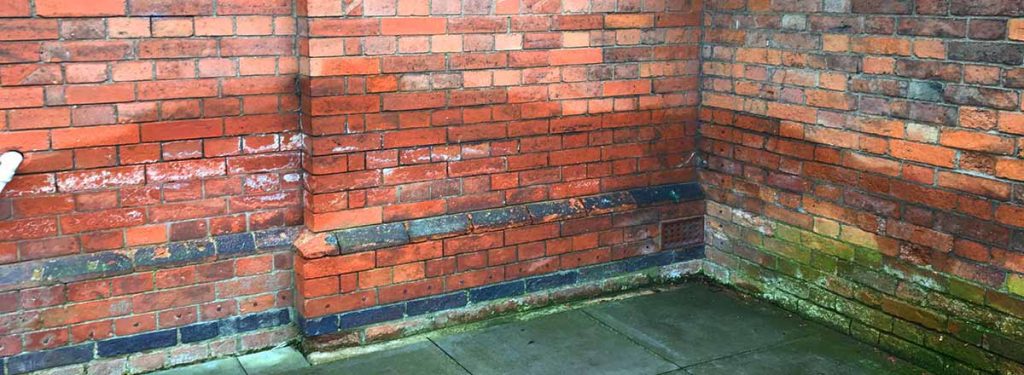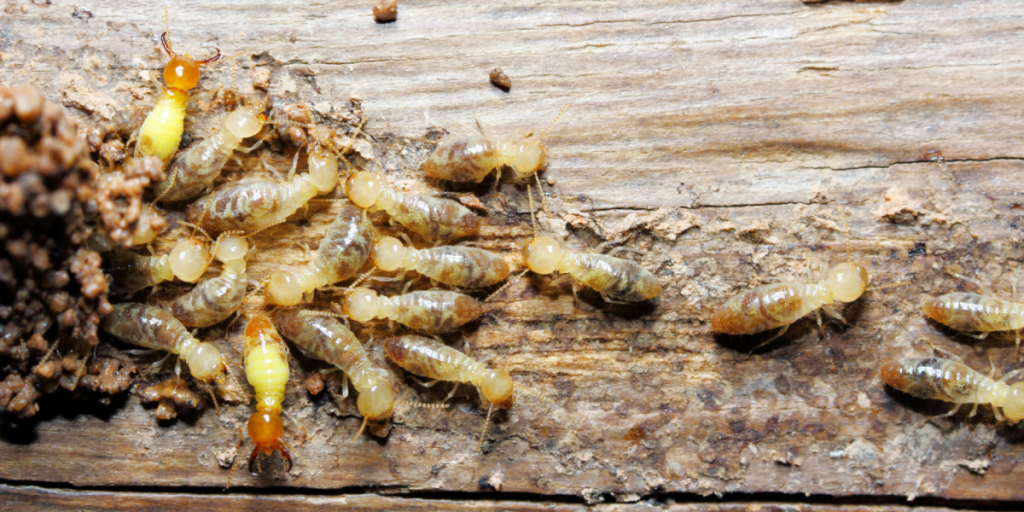Rising damp is a common issue faced by homeowners in Melbourne, particularly those in older properties or buildings with poor drainage systems. It occurs when groundwater rises up through porous building materials, such as bricks or mortar, by capillary action. This moisture can lead to a range of problems, including damage to walls, floors, and internal fixtures, as well as potential health risks from mold and mildew growth.
Let’s dive in deep and explore the causes of rising damp, how to identify it, and the steps you can take to repair and prevent it.


Causes of Rising Damp
Understanding the causes of rising damp is essential for effective prevention and treatment. Several factors can contribute to its occurrence:
1. Lack of Damp Proof Course (DPC): DPC is a barrier typically installed during construction to prevent moisture from rising through walls and penetrating into habitable areas or the structure of the home. In older buildings, DPC may be absent or deteriorated, allowing subsurface water to penetrate the external cladding and “rise”. In newer construction, it is a requirement of the National Construction Code for the DPC to be visible.
2. Porosity of Building Materials: Certain building materials, such as bricks and mortar, are more porous and prone to moisture absorption. Over time, this can lead to rising damp issues if not adequately addressed.
3. High Groundwater Levels: Properties located in areas with high groundwater levels or poor drainage are more susceptible to rising damp. Excessive rain or inadequate drainage systems can exacerbate the problem.
4. Faulty Plumbing: Leaking pipes or drains within or near the building can introduce moisture into the walls, contributing to rising damp.
Identifying Rising Damp
Recognising the signs of rising damp early is crucial for minimising damage and remediation costs. Here are some common indicators to look out for:
DAMP STAINING TO THE WALLS:
Damp staining is a common manifestation of rising damp and can serve as a clear indicator of moisture infiltration within a property. These watermarks or patches of discoloration often emerge near the base of walls, where moisture tends to accumulate. Initially, they may present as subtle yellowish-brown spots, but over time, they can intensify in hue, darkening as the moisture continues to seep into the wall’s structure.
These stains aren’t merely superficial; they signify underlying issues with dampness penetrating through porous building materials. As groundwater rises through the masonry via capillary action, it carries dissolved salts and minerals, which, upon evaporation, leave behind visible traces on the surface. These mineral deposits contribute to the discoloration, further highlighting the presence of rising damp.
Moreover, damp staining isn’t limited to walls; it can extend to adjacent surfaces such as skirting boards, ceilings, and even floor coverings. This widespread manifestation underscores the pervasive nature of rising damp and its potential to compromise the structural integrity and aesthetics of a property.
Beyond their visual impact, damp stains pose additional concerns including the risk of mold and mildew growth. The damp, humid conditions fostered by rising damp create an ideal environment for microbial proliferation, which can lead to health hazards and exacerbate structural deterioration if left unchecked.

SALT DEPOSITS TO THE EXTERNAL BRICKWORK:
Salt deposits, commonly known as efflorescence, are a conspicuous indication of moisture intrusion within a structure, frequently accompanying rising damp. When water penetrates porous building materials and subsequently evaporates, it leaves behind dissolved salts and minerals, which crystallize on the surface of walls and other affected surfaces.
These salt deposits typically manifest as white or greyish crystals, forming intricate patterns reminiscent of frost or snowflakes. Their appearance is often striking against the backdrop of walls, making them readily identifiable signs of moisture ingress. While efflorescence may initially seem innocuous, its presence signifies underlying issues with rising damp that require prompt attention.
Beyond their aesthetic impact, salt deposits can pose significant challenges to the structural integrity of a building. As moisture continues to infiltrate the walls, salts accumulate over time, leading to the formation of crystalline structures within the porous material. These crystals exert pressure on the surrounding masonry, causing it to deteriorate gradually.
Moreover, efflorescence isn’t merely a superficial phenomenon; it can permeate deep within the building’s structure, compromising its stability and longevity. The salts deposited by rising damp can react with components of the building materials, exacerbating the degradation process and weakening the overall structure.
In addition to their structural implications, salt deposits can also contribute to indoor air quality issues and health hazards. As efflorescence accumulates, it can release particles into the air, potentially aggravating respiratory conditions and allergies among occupants.
PEELING, FLAKING & DETERIORATED PAINT:
Peeling paint on the internal, or external wall is a visible manifestation of moisture infiltration within a property, often indicative of underlying issues such as rising damp. When moisture penetrates the walls, it disrupts the adhesion of paint or wallpaper to the surface, leading to detachment and peeling over time.
Initially, signs of peeling paint or wallpaper may appear subtle, with small sections lifting away from the wall. However, as moisture continues to seep into the structure, these symptoms can escalate, resulting in more extensive areas of detachment. In severe cases, you may observe blistering or bubbling of the surface, where the paint or wallpaper forms unsightly bulges as a result of trapped moisture beneath the surface.
The presence of peeling paint or wallpaper not only detracts from the aesthetic appeal of a property but also indicates underlying moisture issues that can compromise its structural integrity. As moisture infiltrates the walls, it creates an environment conducive to mold and mildew growth, posing potential health risks to occupants while accelerating the deterioration of building materials.

Musty Odor: A persistent musty smell, reminiscent of damp or mildew, is often present in areas affected by rising damp. This odor can be particularly noticeable in enclosed spaces with poor ventilation.
Decayed Skirting Boards or Floor Coverings: As moisture rises, it can saturate skirting boards or floor coverings, causing them to decay or rot over time. Soft or crumbling wood is a clear indication of water damage.
Rising Damp Can Contribute to Other Issue
Rising damp significantly contributes to the risk of attack by timber pests by creating conditions conducive to their proliferation and activity. Timber pests, including termites, wood-boring beetles, mould and fungi, thrive in environments characterised by high moisture levels and damp conditions. Rising damp exacerbates these conditions, thereby increasing the susceptibility of timber structures to pest infestation and damage in several ways:
Moisture Content: Rising damp introduces excess moisture into building materials, including timber, which increases their moisture content. Elevated moisture levels make timber more susceptible to attack by pests such as termites and wood-boring beetles, as it softens the wood fibers and makes them more palatable or conducive to tunneling.
Fungal Growth: The damp, humid conditions resulting from rising damp create an ideal environment for fungal growth, including wood-decaying fungi such as dry rot and wet rot. These fungi thrive on moist timber, breaking down its cellulose and lignin components and weakening its structural integrity. As the timber becomes compromised by fungal decay, it becomes more susceptible to attack by wood-boring insects and further deterioration.
Accessibility: Rising damp can facilitate the movement of timber pests by providing them with easier access to vulnerable timber structures. Moisture-saturated wood becomes softer and more easily penetrable, allowing pests like termites to tunnel through the timber more efficiently and establish colonies within the structure.
Camouflage: The visual signs of rising damp, such as damp staining and peeling paint, can obscure the presence of timber pests and their activity. As attention is often focused on addressing the moisture issues associated with rising damp, the presence of underlying pest infestations may go unnoticed until significant damage has already occurred.
Structural Weakness: As rising damp compromises the structural integrity of timber components through moisture-induced decay and fungal growth, it weakens the timber and makes it more susceptible to damage by timber pests. This structural weakness can facilitate easier access for pests and increase the likelihood of extensive damage to the affected timber elements.
Overall, rising damp creates an environment that is conducive to timber pest activity and exacerbates the risks associated with infestation and damage to timber structures. Addressing rising damp through proper moisture management and remediation strategies is essential for mitigating the risk of timber pest attack and preserving the integrity of timber components within buildings. Regular inspection, maintenance, and treatment for both rising damp and timber pests are crucial for protecting properties from the costly consequences of infestation and structural damage.

Repairing Rising Damp
Addressing rising damp requires a systematic approach to eliminate moisture and restore the affected areas. These steps are general advice only and will need an expert to assess and provide further advice specific to your home and cause.
Identify the Source: Before undertaking any repairs, it’s essential to identify and address the underlying cause of the rising damp. This may involve inspecting the building’s damp proof course, drainage systems, and plumbing to identify any faults or leaks.
Install or Repair Damp Proof Course: In many cases, installing or repairing the damp proof course is necessary to prevent further moisture ingress. This can be achieved by injecting a chemical DPC into the affected walls or installing physical DPC barriers where necessary.
Remove Damaged Materials: Any materials affected by rising damp, such as damp plaster or rotten skirting boards, must be removed and replaced. This ensures that the underlying structure is free from moisture and can properly dry out.
Treat Mould and Mildew: If mold or mildew growth is present, it’s essential to treat affected areas with a fungicidal solution to prevent further spread. Proper ventilation should also be maintained to discourage mold growth in the future.
Improve Drainage: Addressing underlying drainage issues, such as blocked gutters or inadequate surface drainage, can help prevent future instances of rising damp. Ensuring that water is directed away from the building’s foundations can significantly reduce moisture ingress.
Monitor and Maintain: Regular inspection and maintenance of damp prone areas can help identify and address rising damp issues before they escalate. This includes keeping gutters and downpipes clear, repairing any leaks promptly, and ensuring adequate ventilation throughout the property.
Preventing Rising Damp
While repairing rising damp is essential for addressing existing issues, prevention is always the best method. Here are some general measures you can take to prevent rising damp in your home:
Maintain Adequate Ventilation: Proper ventilation helps to reduce humidity levels indoors, minimising the risk of condensation and mold growth. Ensure that air vents are unobstructed and use extractor fans in kitchens and bathrooms where moisture levels are high.
Address Exterior Drainage: Keep gutters, downpipes, and drains clear of debris to prevent water from accumulating around the building’s foundations. Consider installing additional drainage solutions, such as spoon drains or agi drains, to divert water away from the property.
Apply Waterproofing Treatments: Applying waterproofing coatings or sealants to exterior walls can help repel moisture and reduce the likelihood of rising damp. Be sure to choose products specifically designed for the type of surface you’re treating.
Maintain Damp Proof Course: Regular inspection and maintenance of the damp proof course can help ensure its effectiveness over time. Repair any damage or deterioration promptly to prevent moisture ingress.
Monitor Moisture Levels: Engaging Building Assessment Unit on a regular basis to undertake a home health check which looks at critical elements such as the foundations, roof and DPC, and following the detailed advice is critical to mitigate the risk of rising damp in your home.

In conclusion, rising damp is a common but manageable problem that can affect properties of all ages. By understanding the causes, identifying the signs, and implementing appropriate repair and prevention measures, homeowners can effectively address rising damp issues and safeguard their properties against future damage. If you suspect rising damp in your home, don’t hesitate to consult with a qualified building professional for expert advice and assistance.